Richards Bay is our first stop in the eastern sea boat of South Africa. What greets us as we dock is a sea of coal mounds and coal dust.
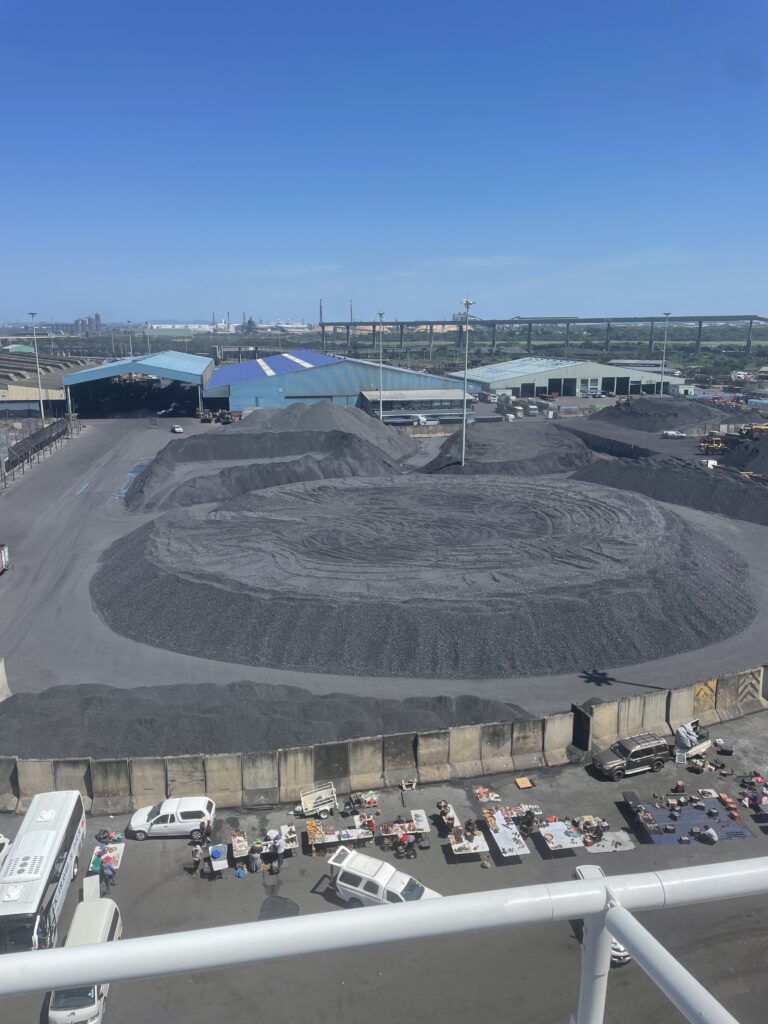
Richards Bay does not have a cruise port, so the ship must make use of the same port as tankers and coal shipping freighters.
It is so bad that the ship’s crew hand is masks as we disembark so that we don’t breathe in coal dust in our lungs.
It’s a two hour bus ride to the St-Lucia wetlands where we will take a two hour cruise down the estuary. Along the way we see many people selling refrigerant for air conditioning or pineapples just by the side of the road.

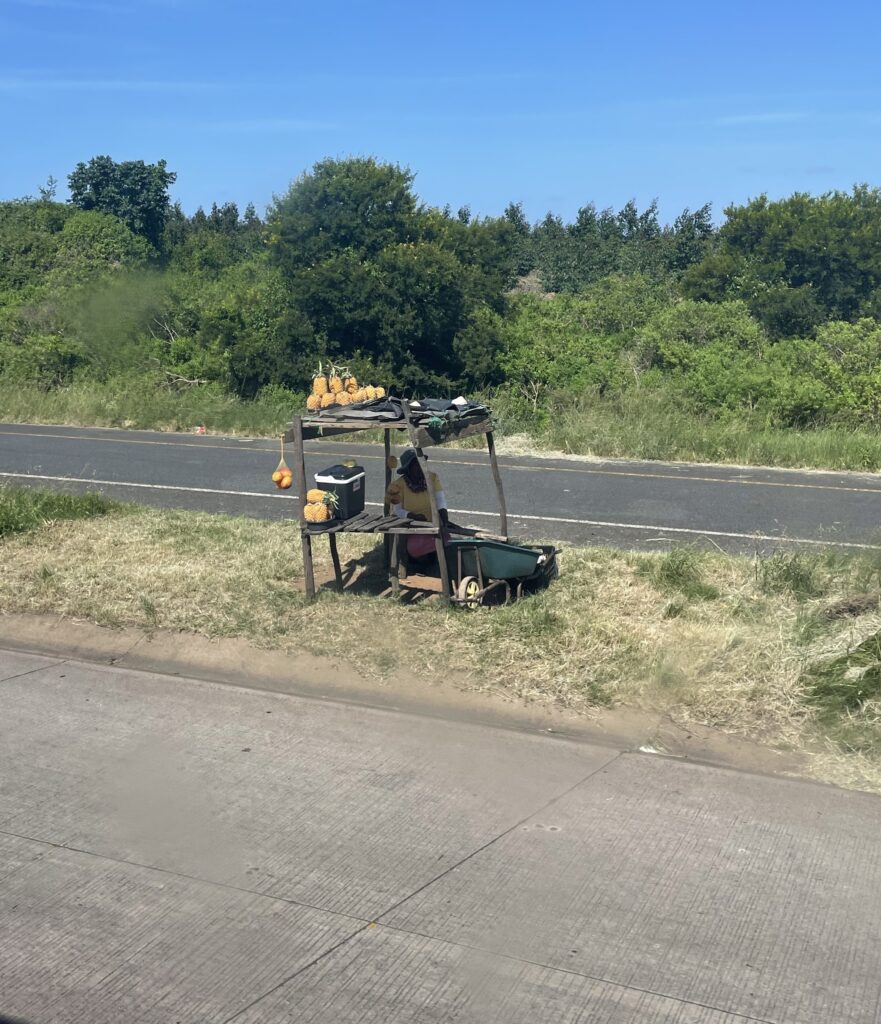
The town near the wetlands is filled with restaurants and hotels, B&B and self-catering apartments.


Young men and boys greet us with a traditional Zulu dance before we board the boat.
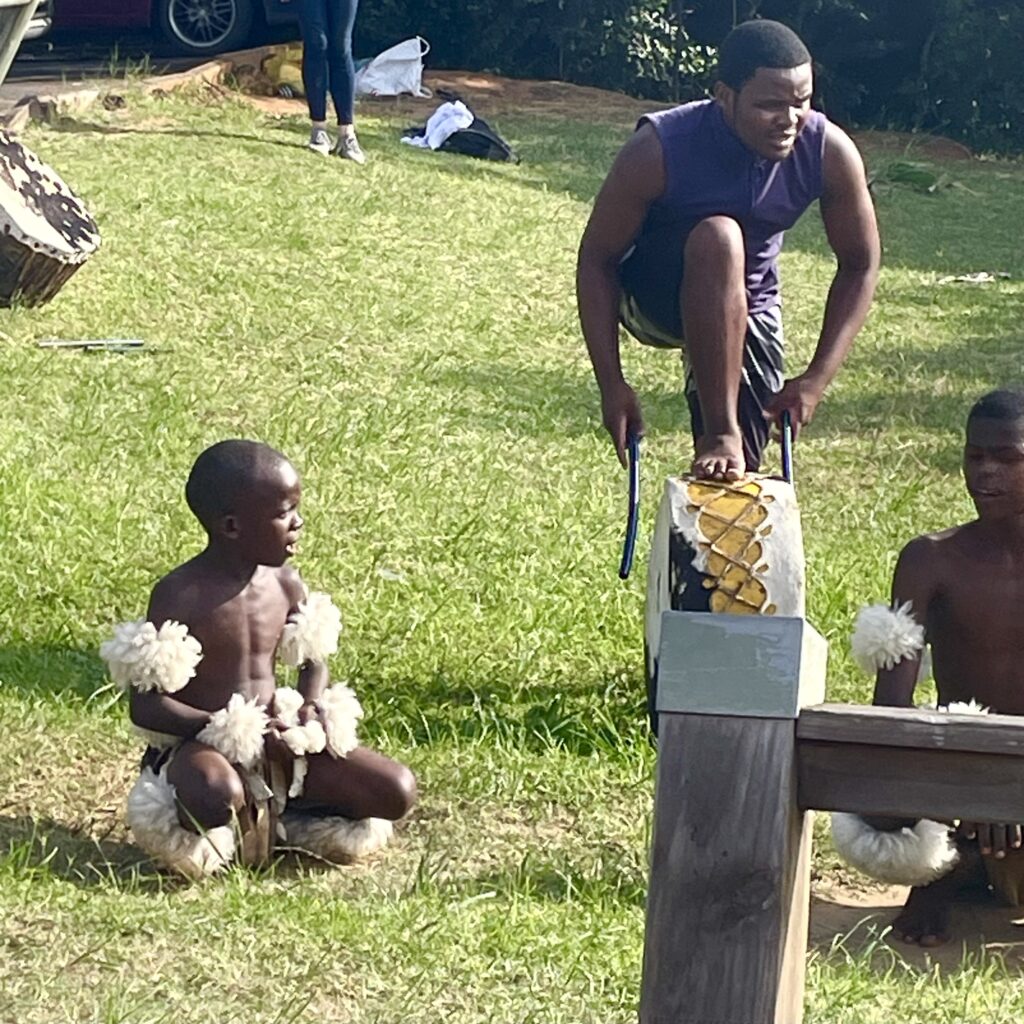
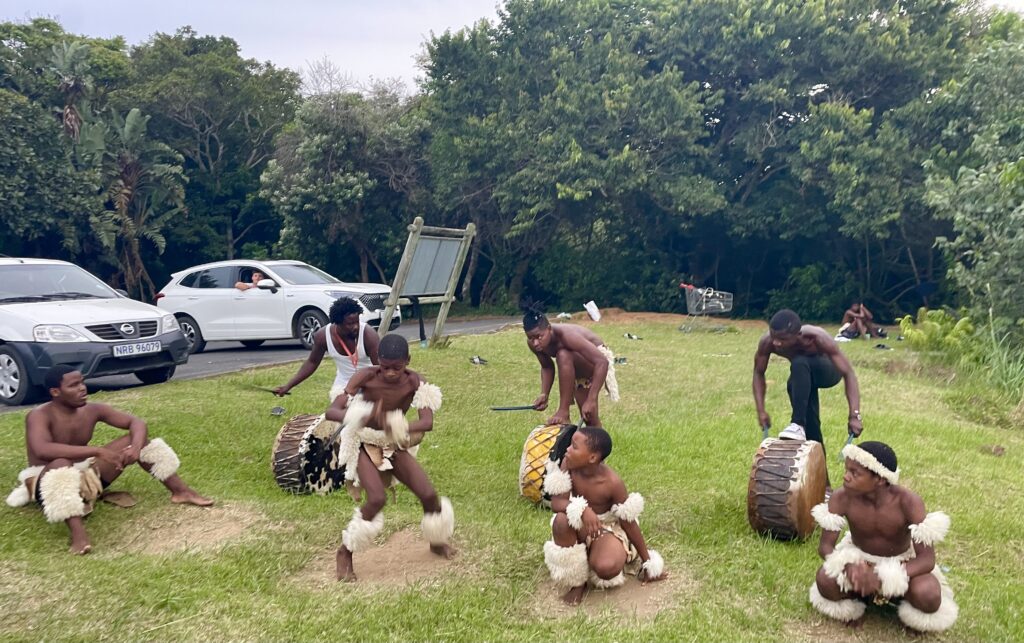
We set out to see the crocodiles and hippopotamuses. The signs in the nearby town alerting tourists of marauding hippos should have been a clue to how many there are.
Hippos are the most dangerous animal in Africa. They can out swim and out run you. Their big canine tusks can pierce steel! The most dangerous place for a human is between a hippo and water.
It’s not long before we come across a few by shore under the mangroves and then in the open water.
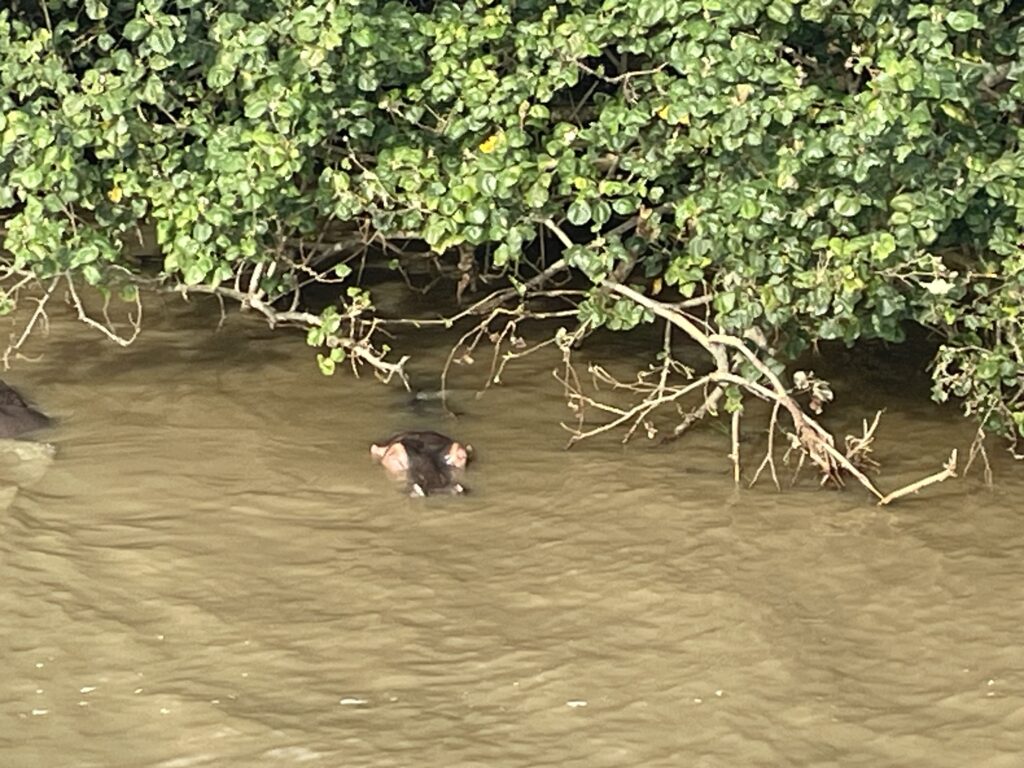
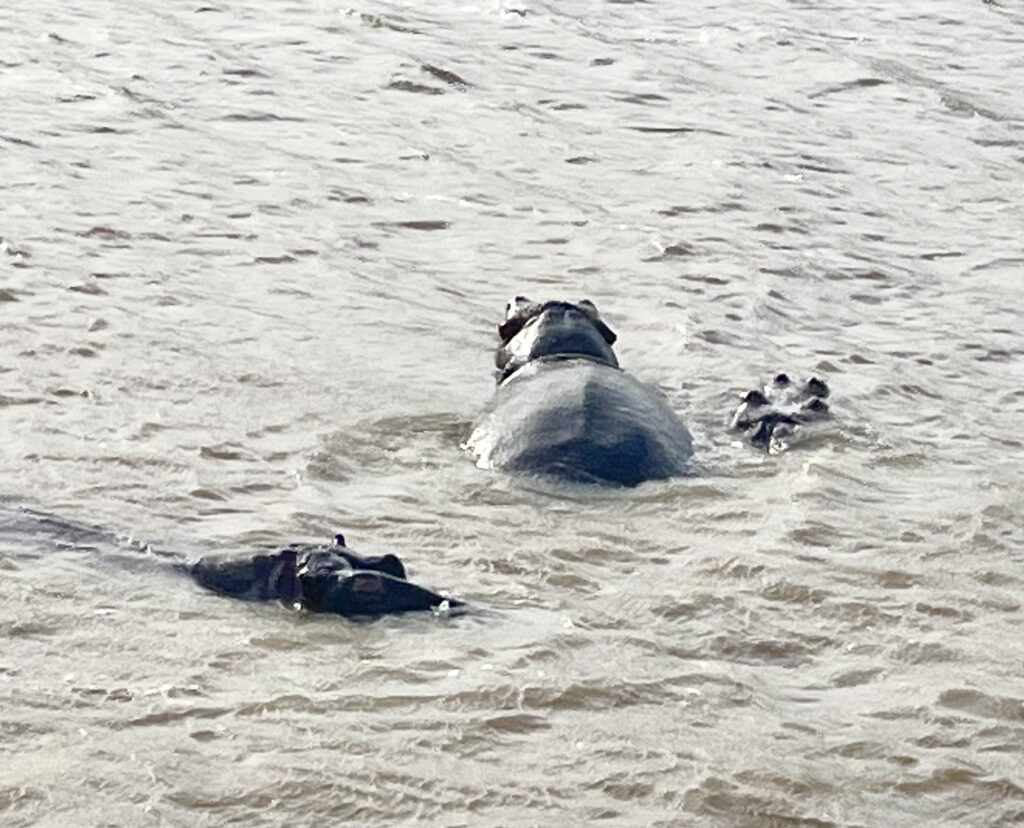
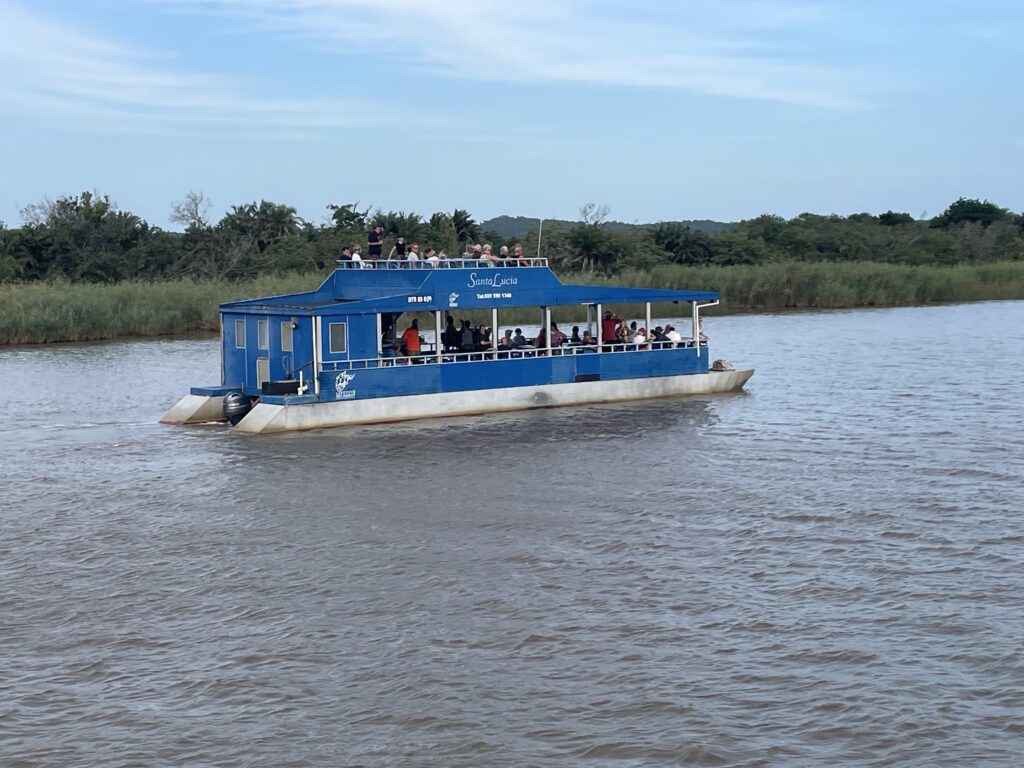
A bunch of hippos together is a called a gloat and we find more upriver.
Looking towards a mass of reeds, we can see big round bird nests hanging by the hundreds. Then we can hear the sounds of the yellow weavers as they flit and fly all around us. Members of the finch family, their yolk-coloured plumage is beautiful.
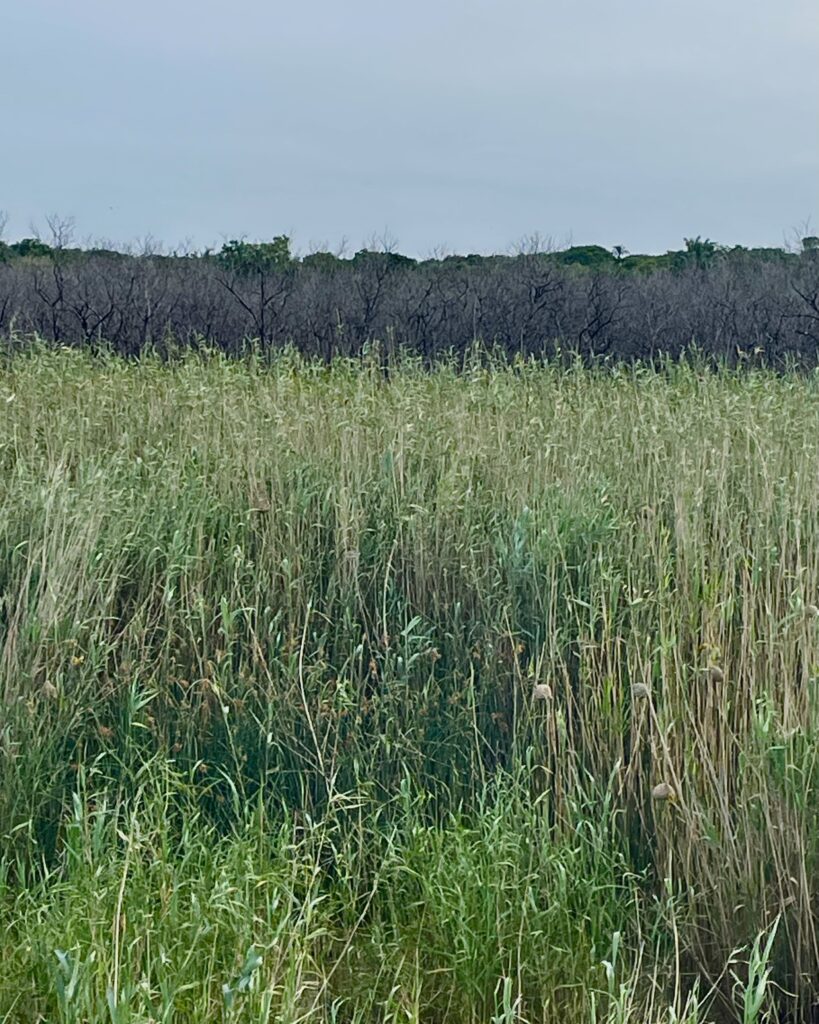
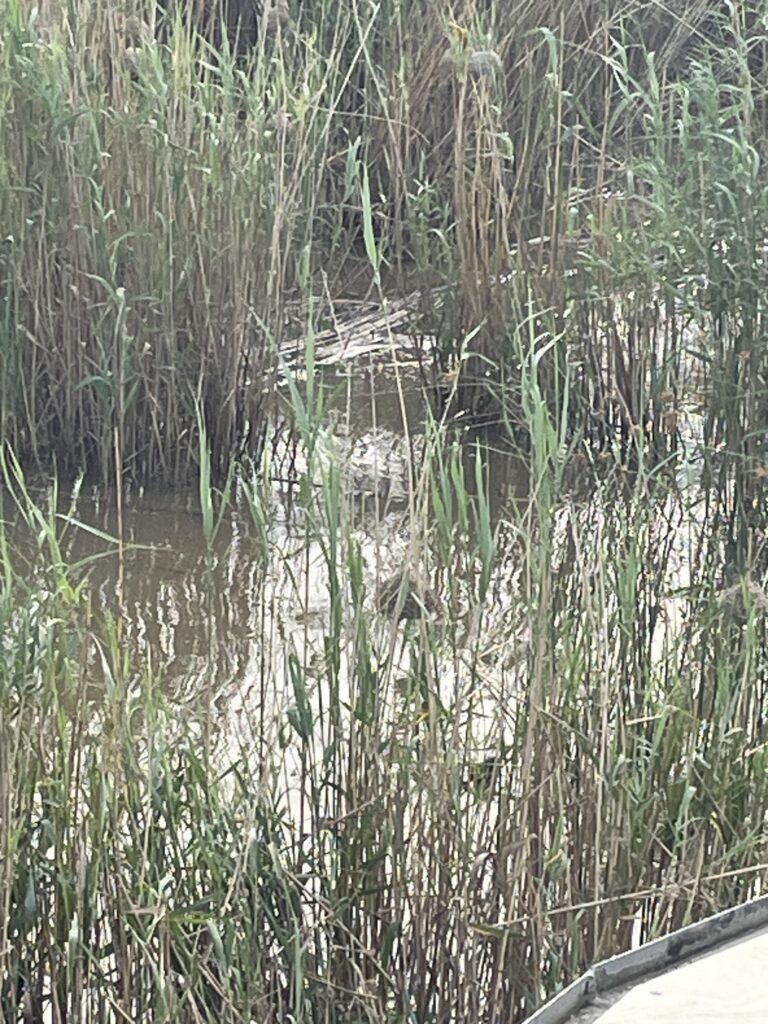
The male weaver is responsible for building the nest and if it doesn’t come up to snuff, the female will reject him as a mate and the whole process of rebuilding has to start over. There were many jokes by the men on the boat about house renos and that they knew how the male birds felt.
The crocs were nowhere to be seen though.
Day 2 in Port Elizabeth was much nicer. Port Elizabeth is also in the Eastern Cape Province and is about 750 km east of Cape Town. Many opt for the game drives but we wanted to experience a canoe ride down the Sundays River with Crisscross Adventures. It is already 30 Celsius but the prediction is it might go to 45-50 Celsius by late afternoon!

We are taken by a Land Rover type vehicle to our launch where we drive by orange, mandarin and lemon groves.
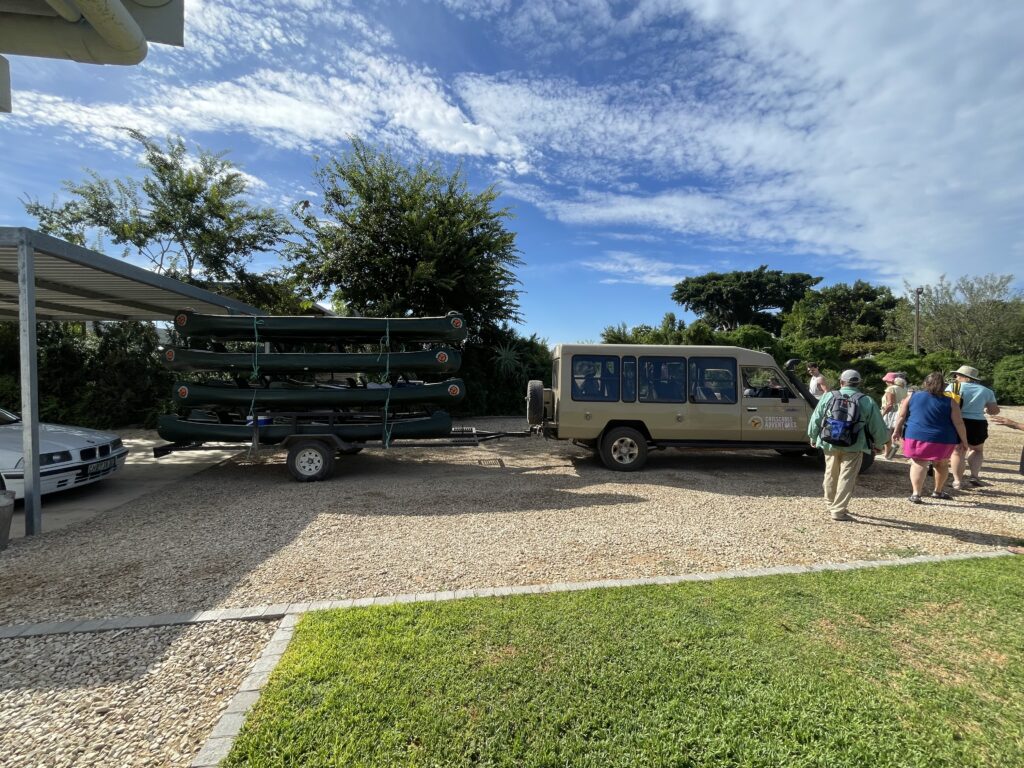
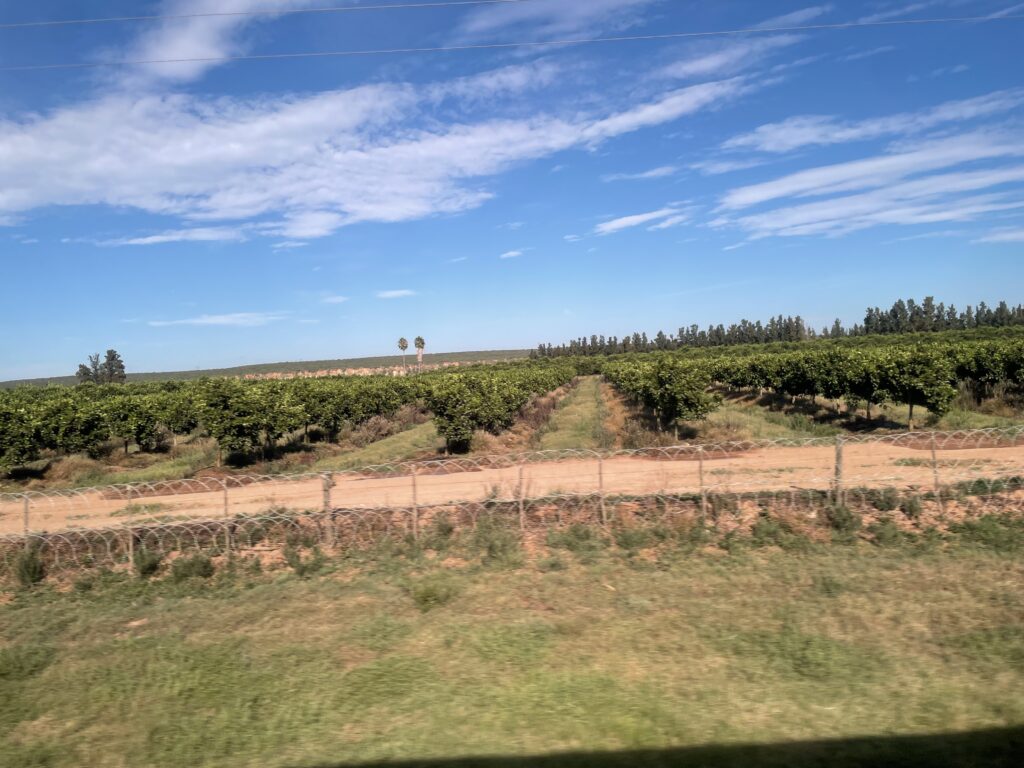
We arrive at the river and it is not very wide but the banks are green and grassy despite the arid terrain just a few feet away.

It’s actually perfect being on the river even with the heat. The sky is blue, you can hear the birds chirping and the sound of rushing water ahead. Oops! Someone doesn’t negotiate the small rapids and went sideways inundating the canoe with water requiring the guides to help move the canoe.

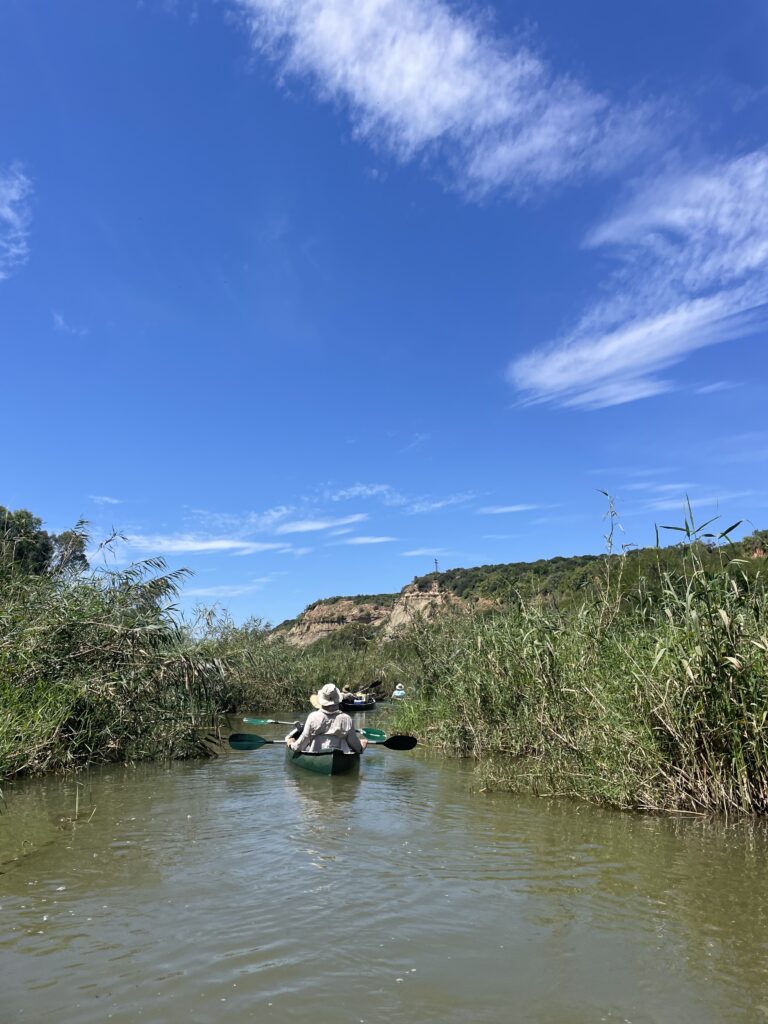
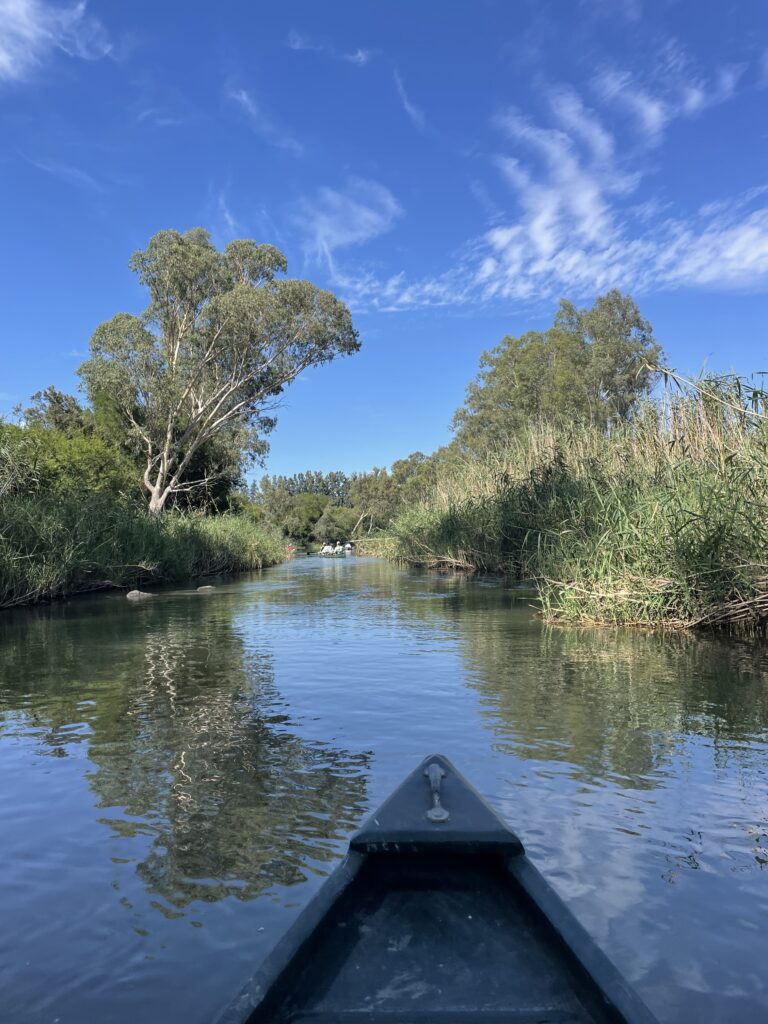
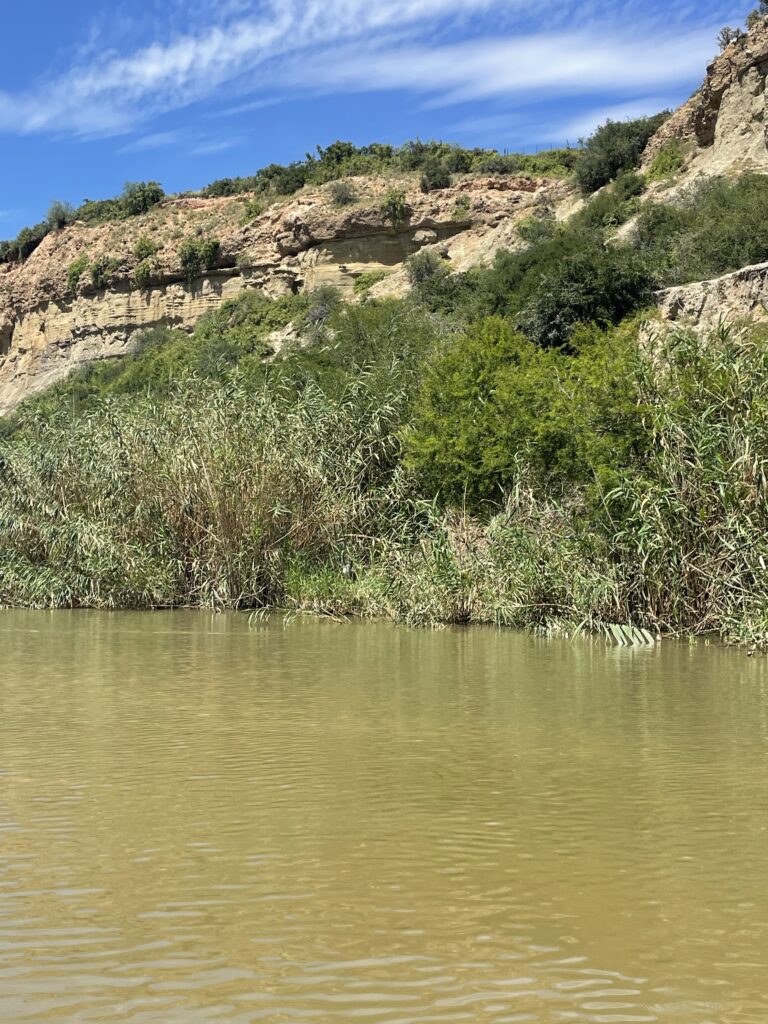
We find a nice shady spot by shore and take a break with a beer and snack.
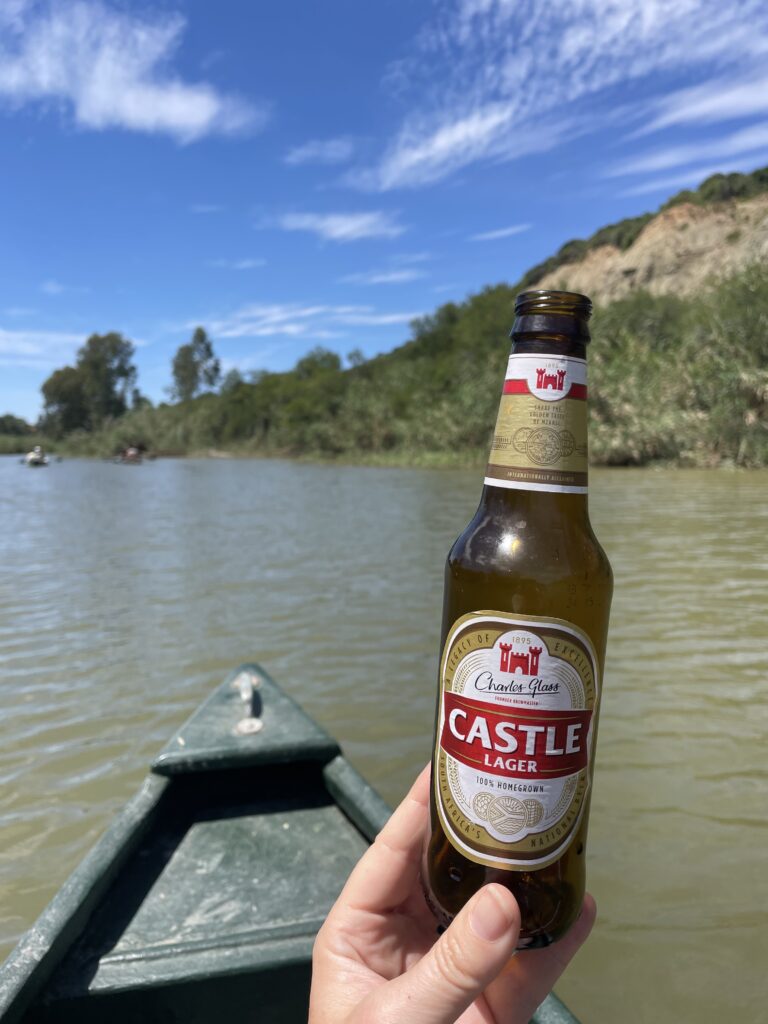
Like in Richards Bay the day before, we see more weavers’ nests.
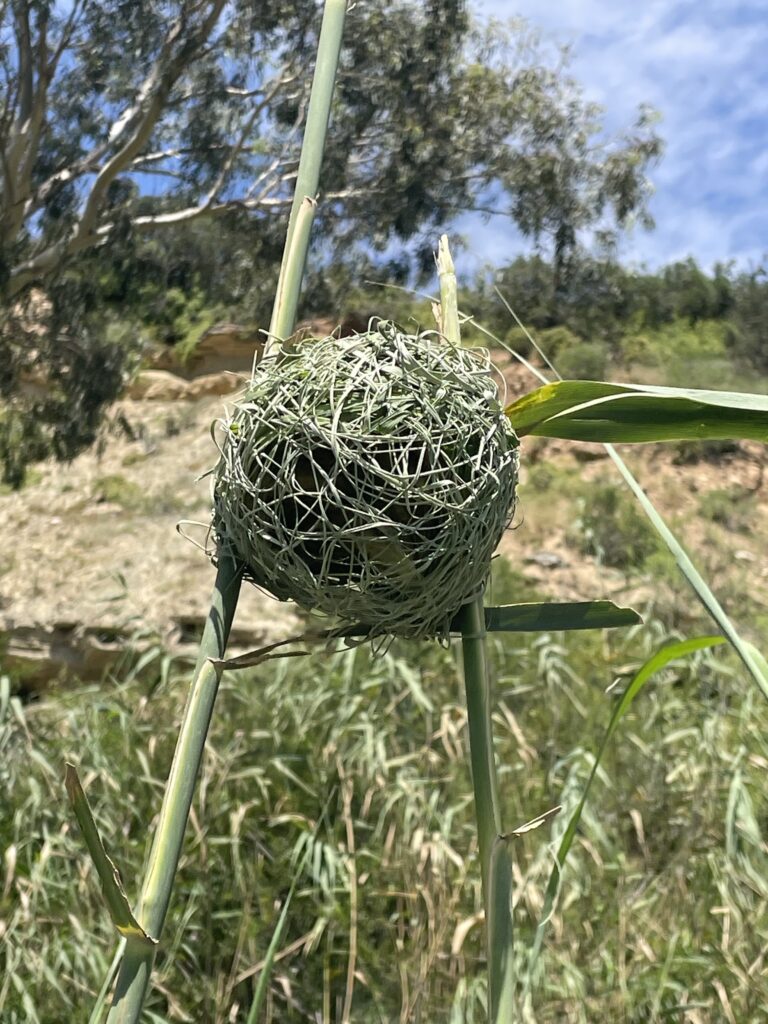
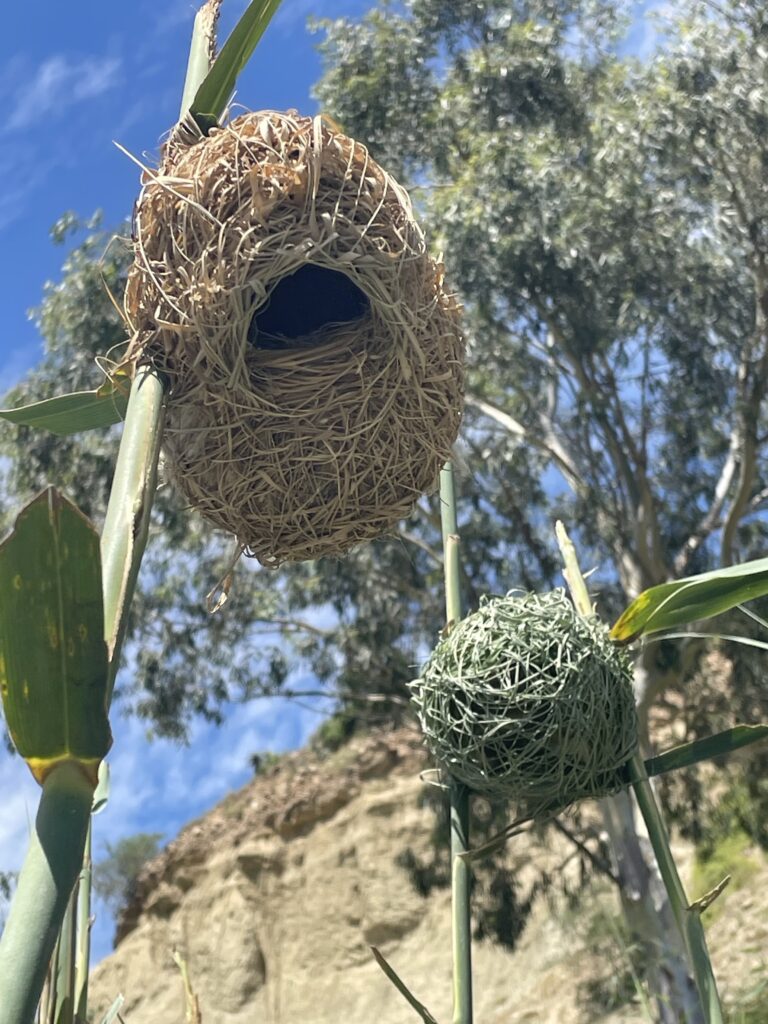
At times you hear the long flowing grasses of the river bed, scratching along the bottom of the canoe.
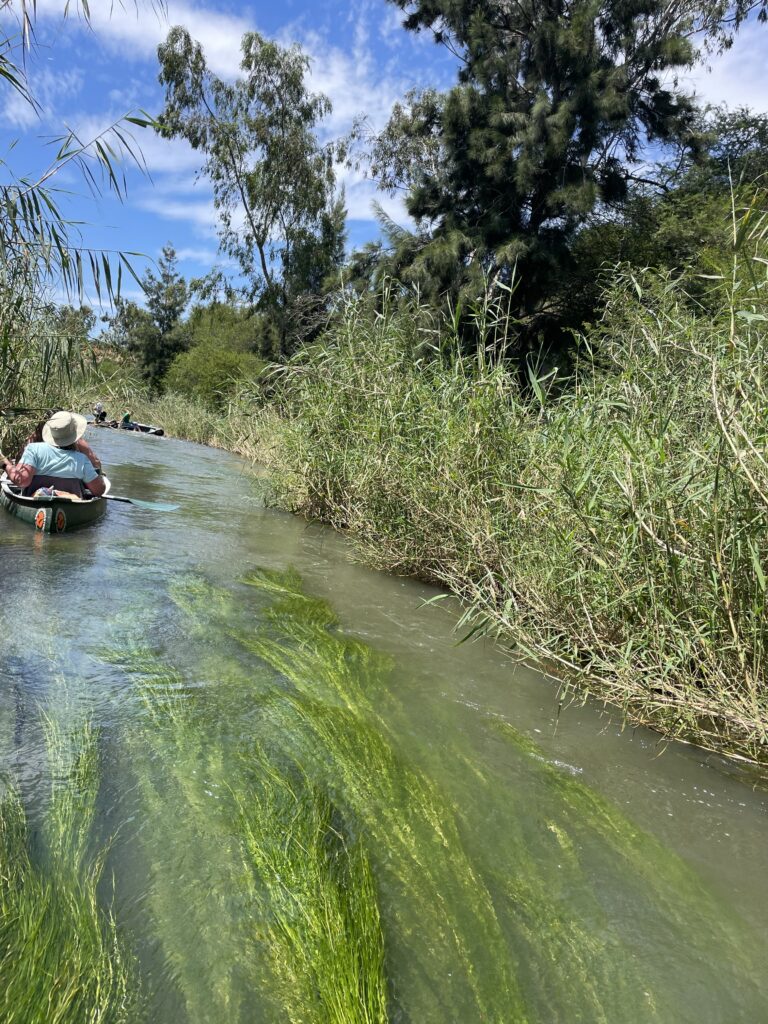
Once the canoe trip is over we are taken back to the lodge where we will have a braai, which is the South African name for BBQ. Cooked over fire, our chef prepares Kudu sausages, chicken kebabs and a toasted sandwich of which we have no idea what was in it except it tasted marvellous. Surrounding the lodge are stuffed animals.

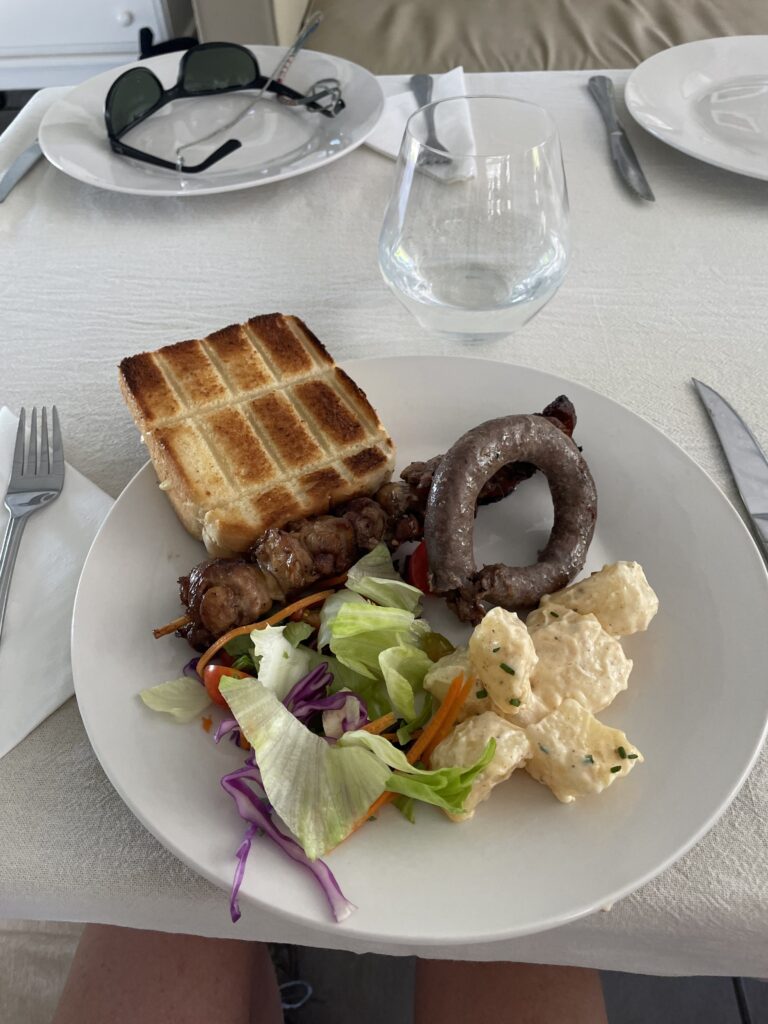
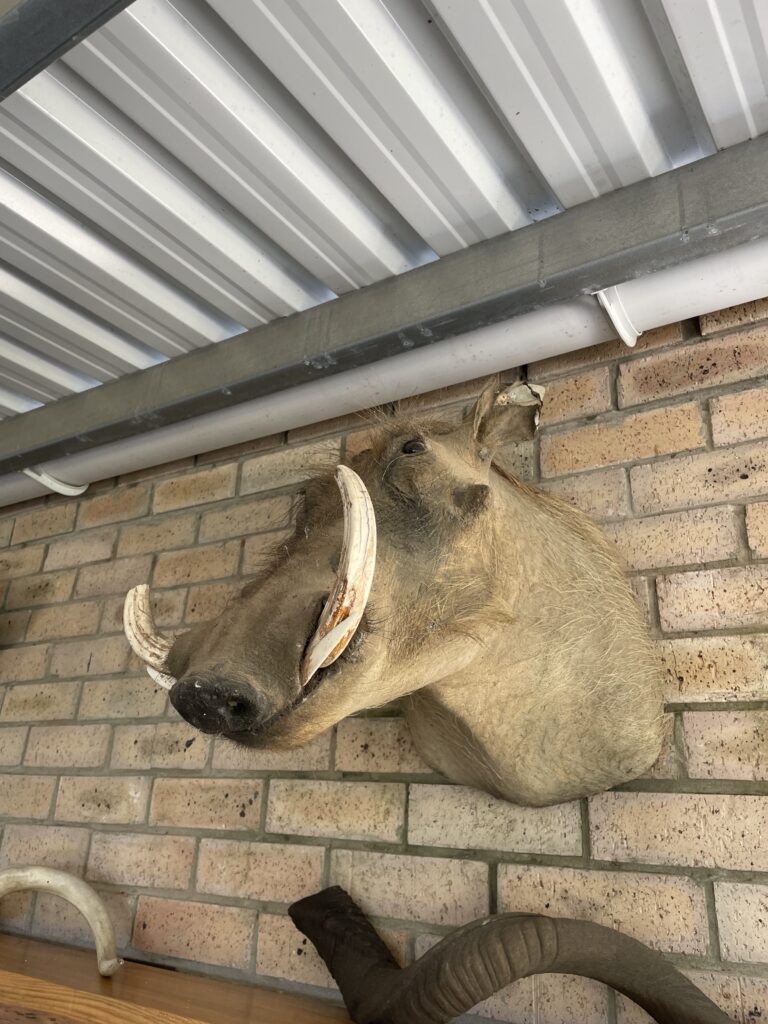

The saddest thing though that we see a lot on the eastern coast of Africa are the garbage that lines the roads and the shanty town that exit everywhere. We hope one day that this will come to pass.
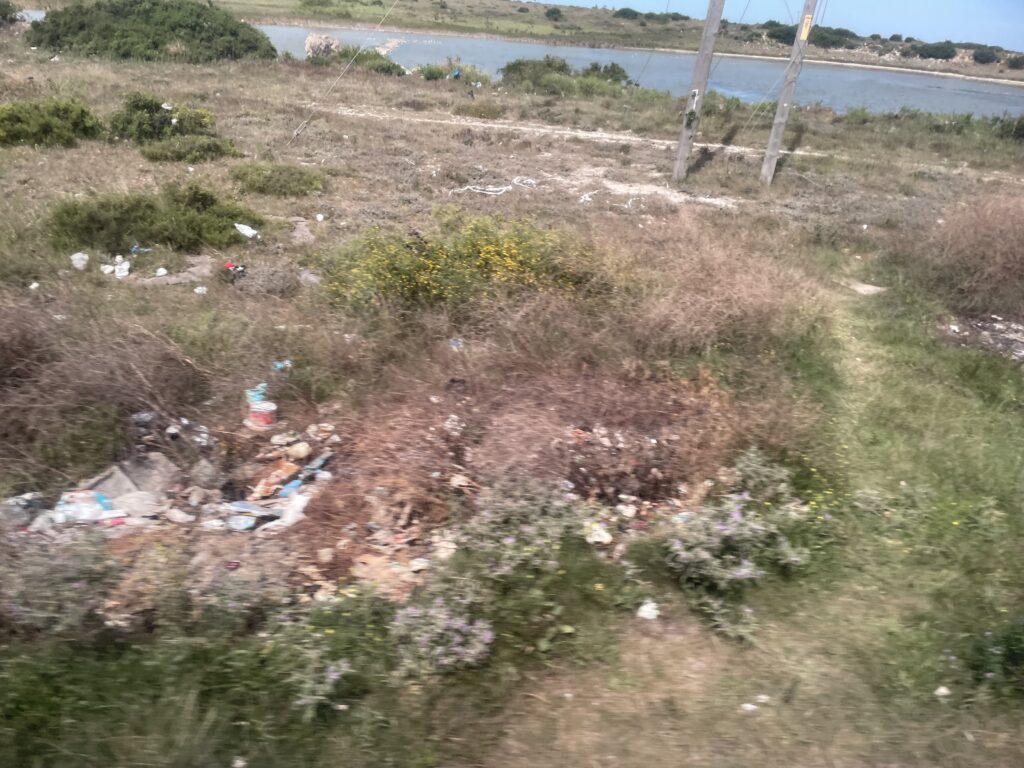

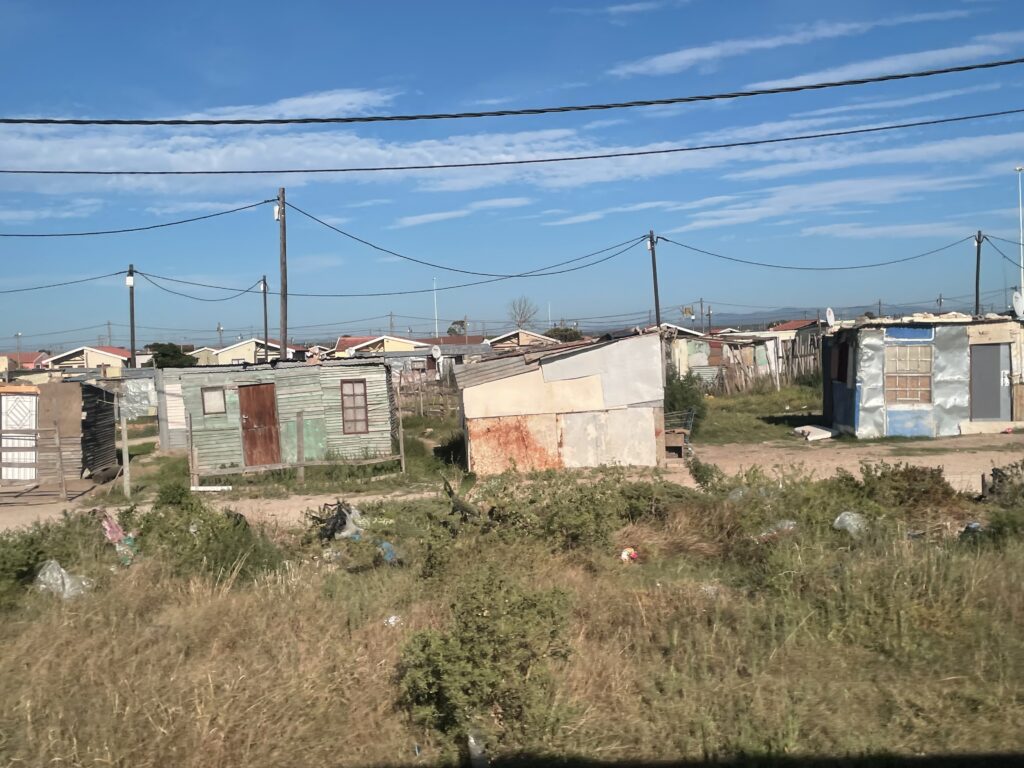
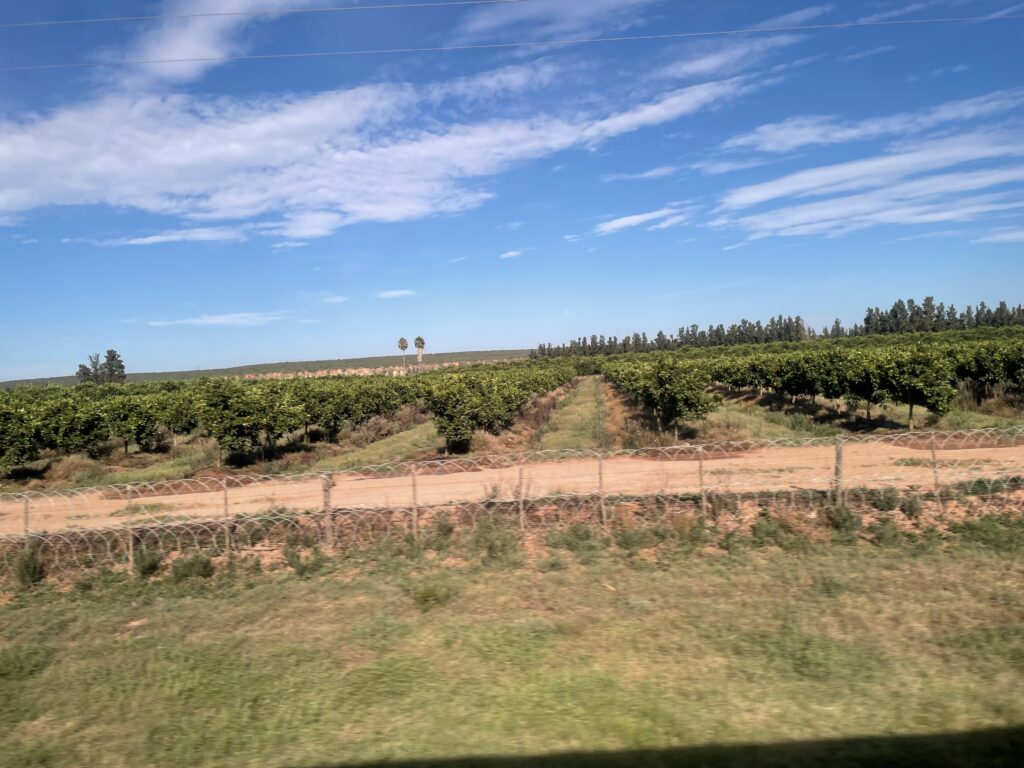
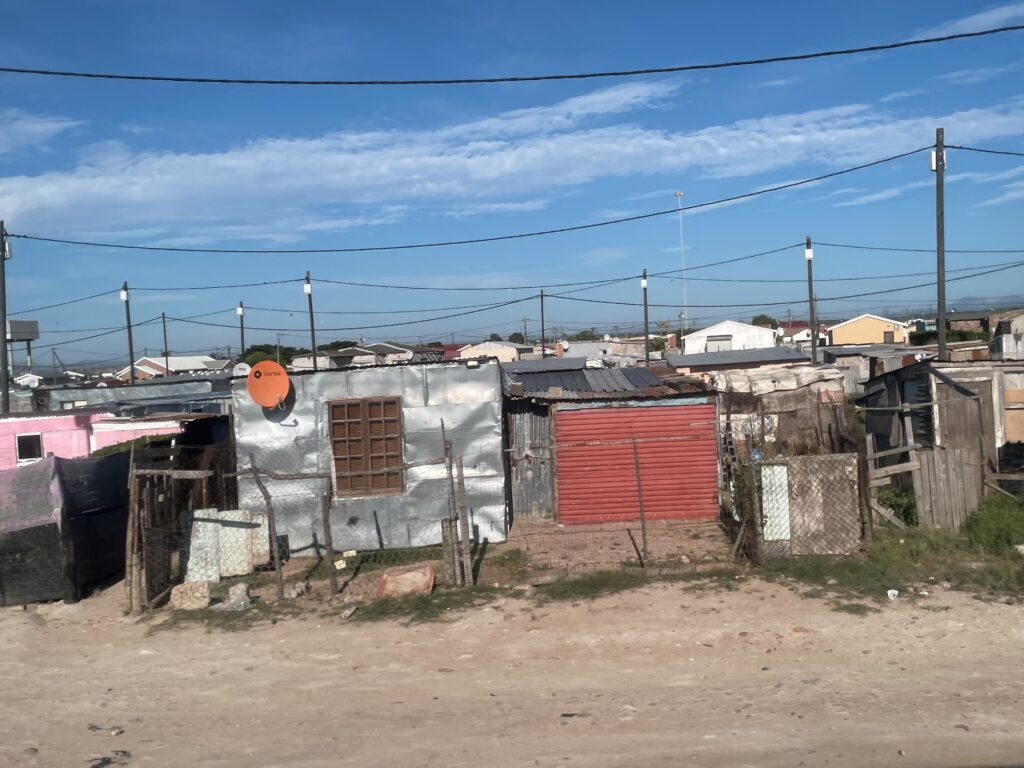
Our last day before we arrive in Cape Town, we make a stop in Mossel Bay.
A few hundred kilometres south of Port Elizabeth is the town of Mossel Bay. Jason and Leigh are our guides today for our hike up the St-Blaize Trail a 13.5 km walk along the cliff’s edge.
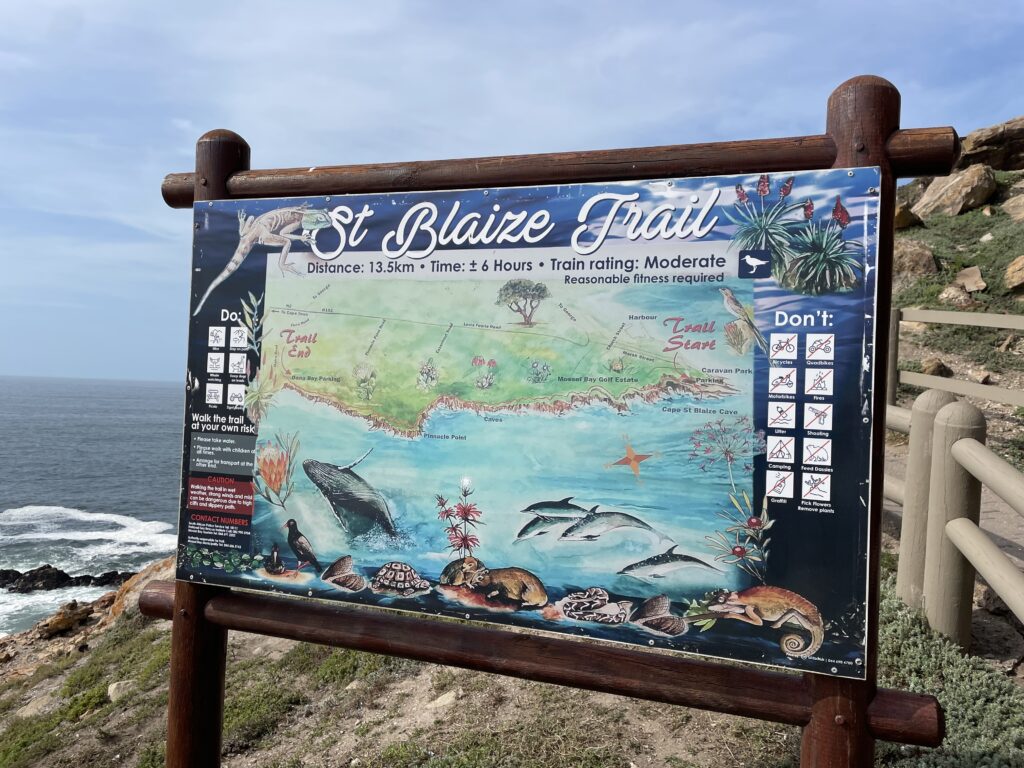
At the entrance, we spy a dung beetle in the parking lot. They dig their heads in the sand and let the water droplets fall from the backs to their heads.

Next, a rock hyrax looks down on us from the rock wall. These animals have more in common with elephants than rodents!
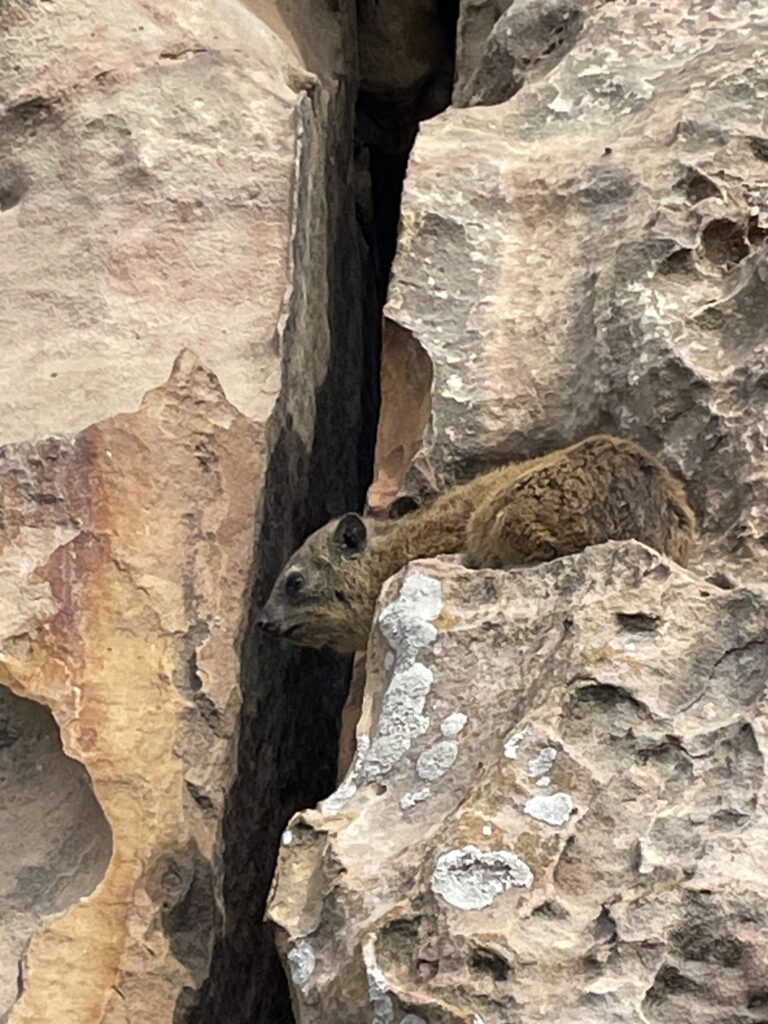
First we must negotiate the wooden steps and then natural rock steps to the top. Jason explains about all of the flora and the various snakes. That brings us to full attention. Though the puff adder is a shy snake, he can be easy to step on and bite you. The black mamba is an aggressive snake and would not hesitate to engage you.
The view from the top leaves us speechless.

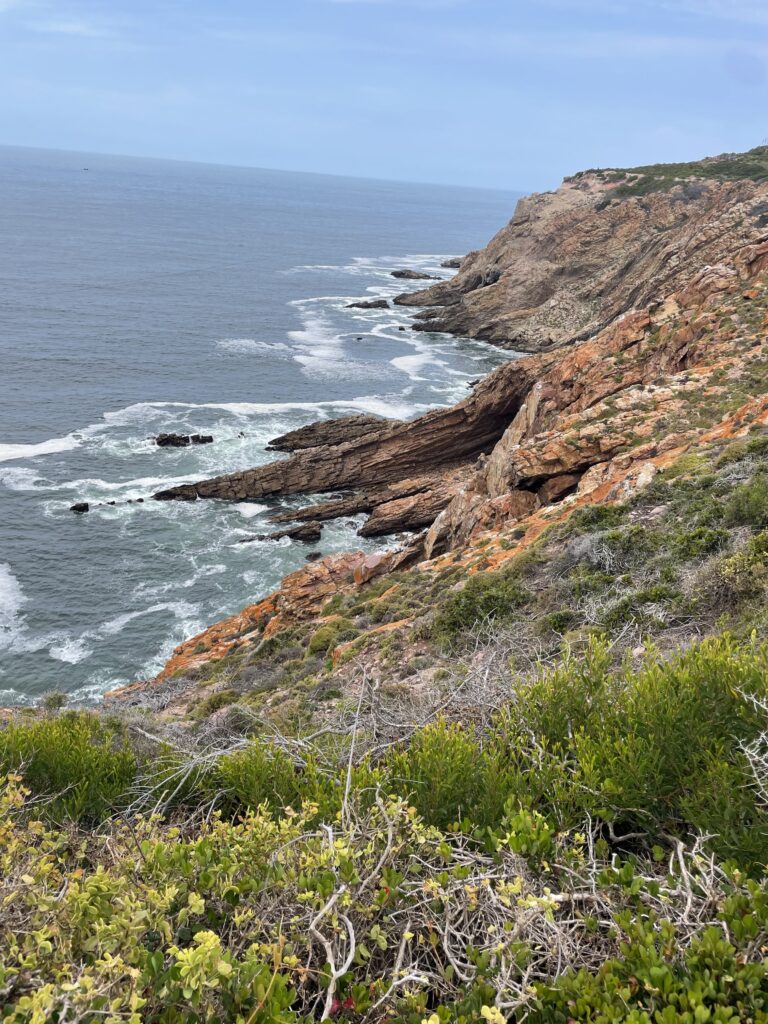
There are natural pools below where swimming is allowed and one woman takes advantage of the diving rock.

The sea is blue-green and pounds the rocky shoreline below. Another rock hyrax is munching on his grassy lunch beside us.
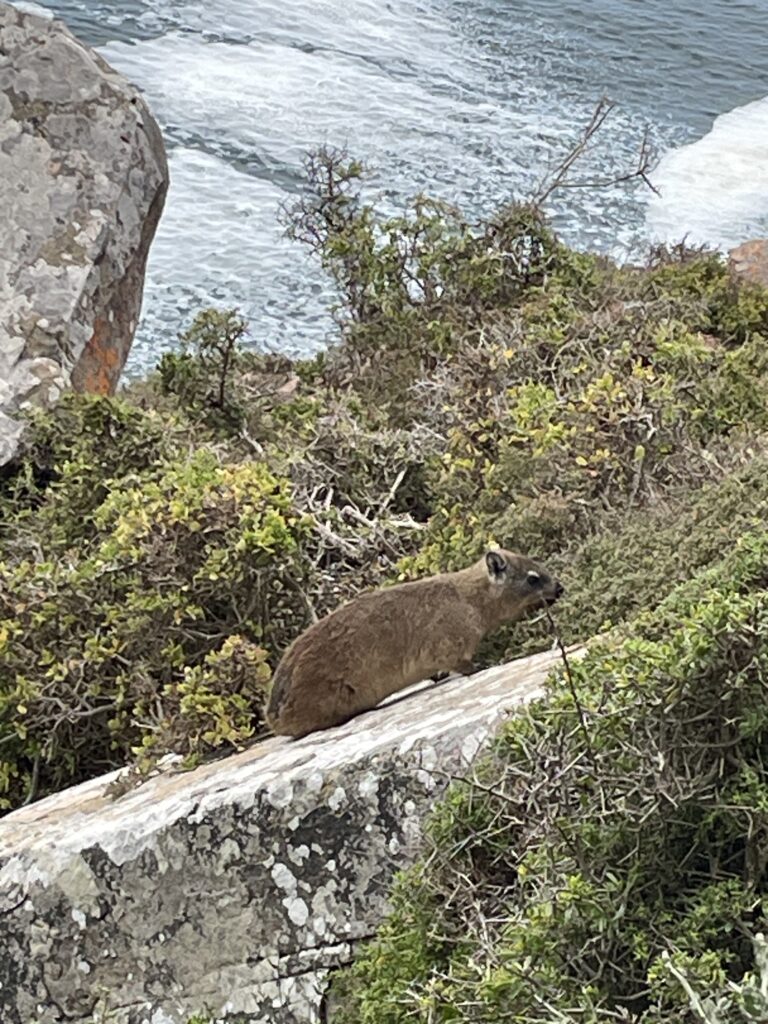

You must have some fitness level to hike the trail as there are rocky heights to be negotiated and the heat can be intensive. It’s amazing though at how much flora competes for space in this tiny environment.
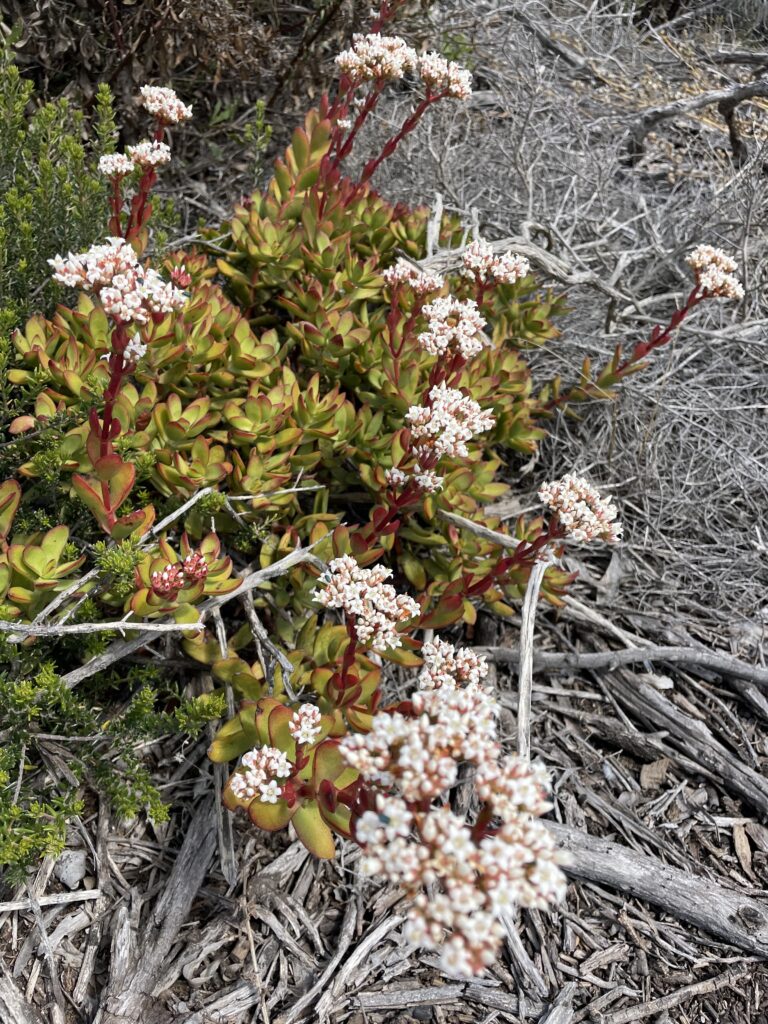

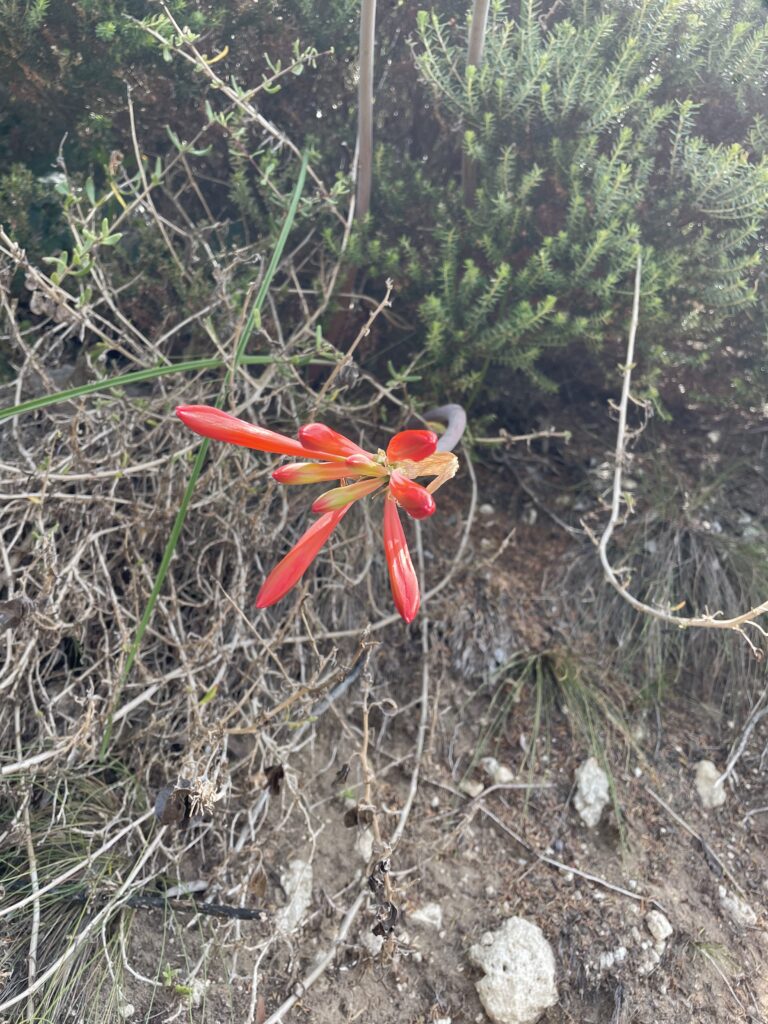
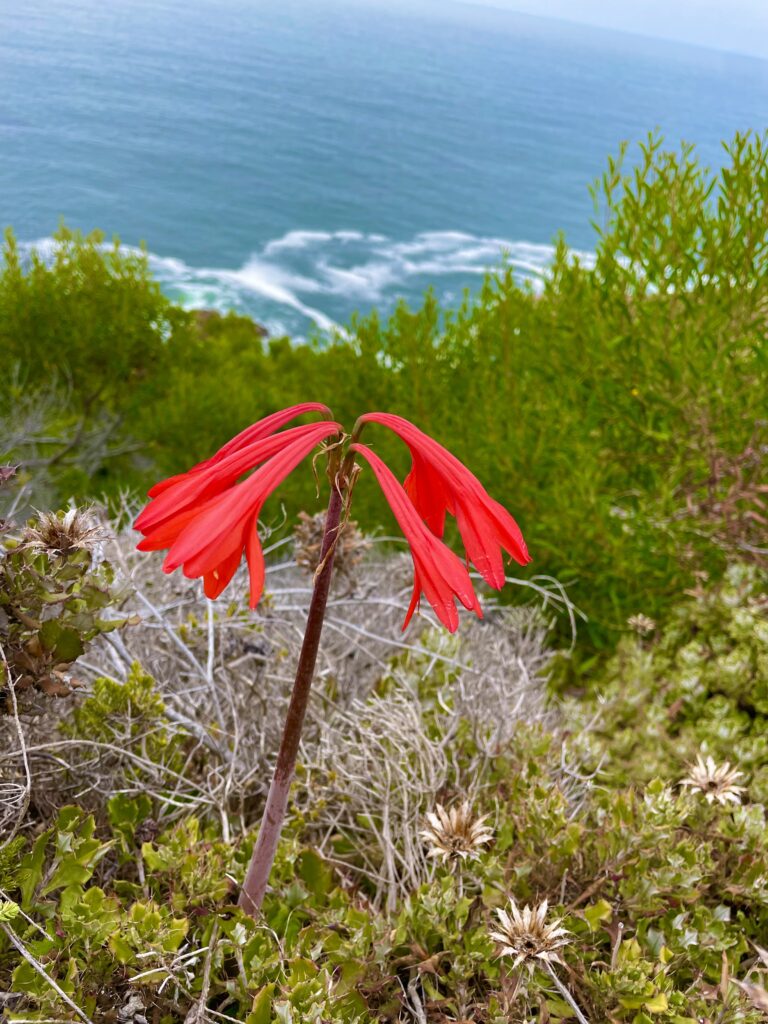
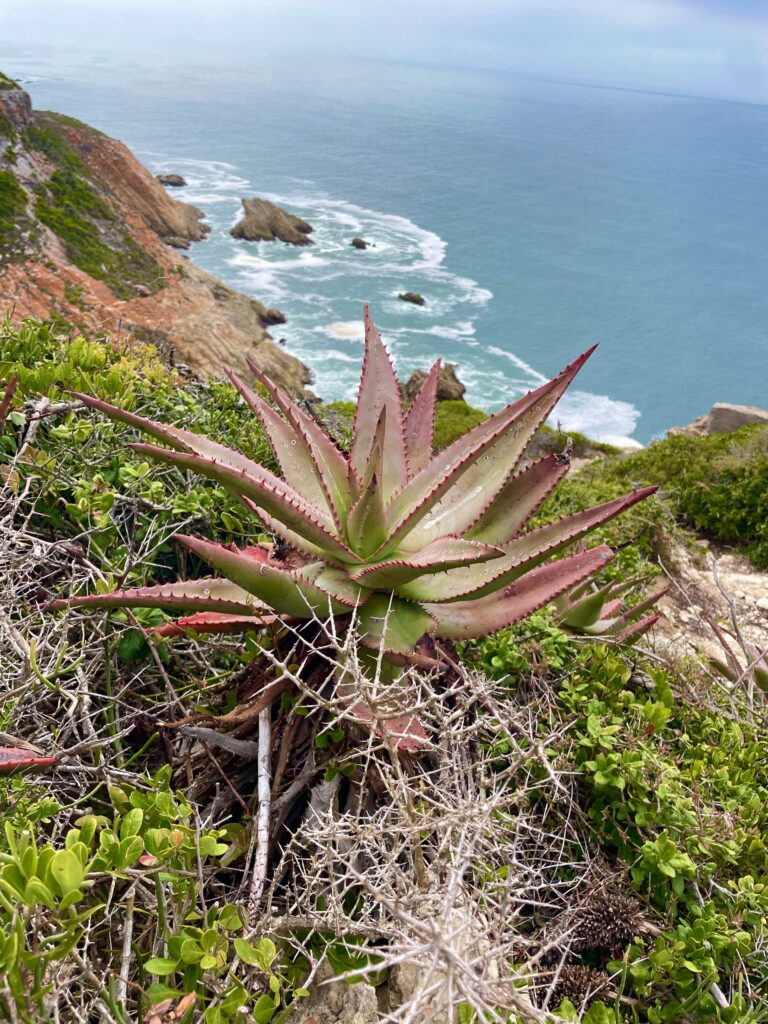
After our walk, we are treated for lunch at a local restaurant and decide to try the springbok carpaccio. It is dark red meat but was delicious.
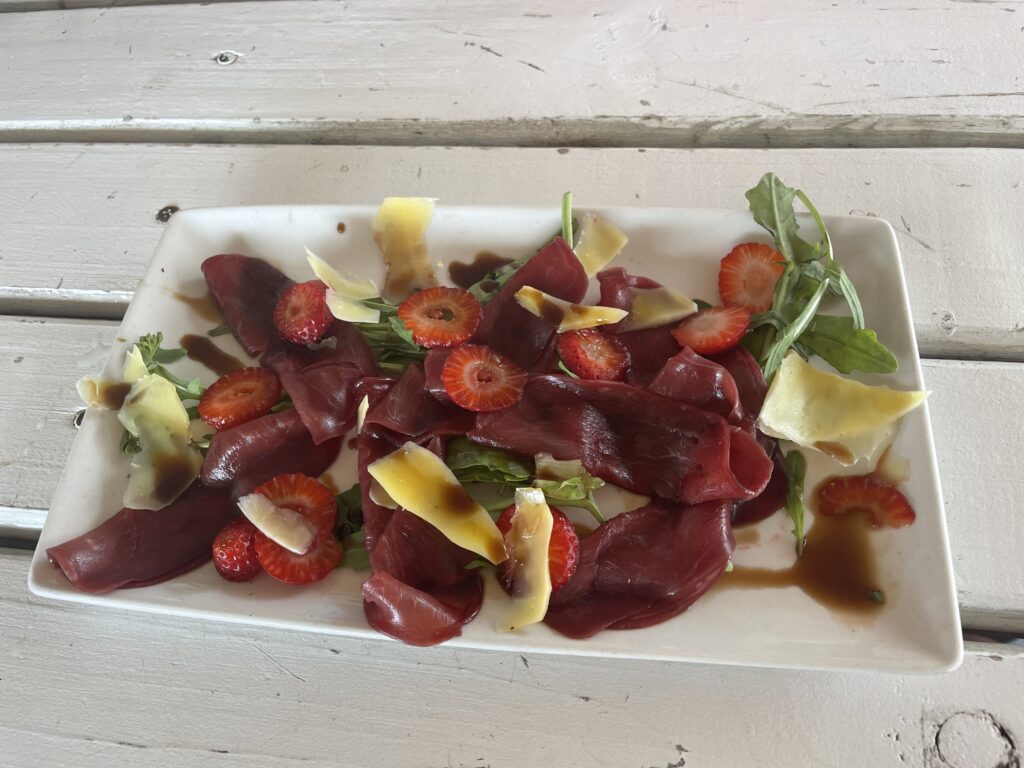
We decide to take a walk in the town and spot a nice wine bar in the tourism office. The wine is great and they have cool art for sale as well.
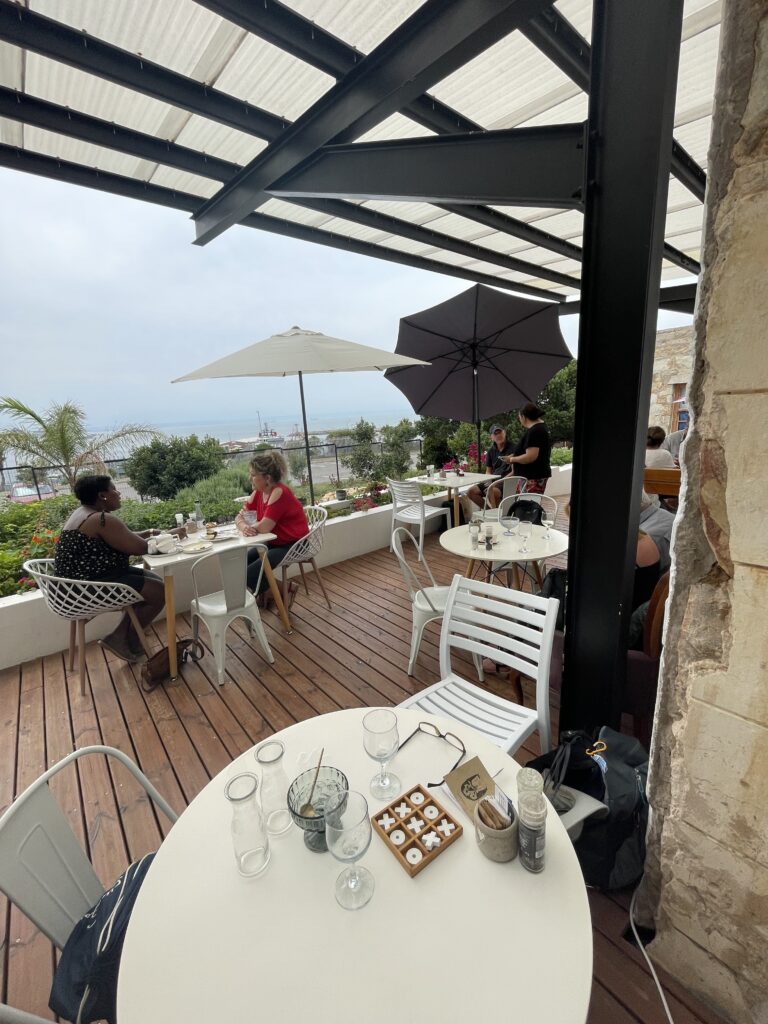
Our final stop is Cape Town so stay tuned for that blog.
Recent Comments